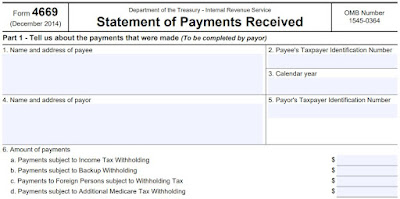You will recognize the issue.
During 2017 Mary deNourie worked at a retail store.
She had wages of $11,516 and social security of $7,559. She and her husband did
not file an income tax return because the withholding was enough to cover any
tax due.
In 2021 the IRS contacted them about not filing a 2017
tax return. The IRS was preparing a substitute for return showing the wages and
social security as well as partnership income of $25,065. When you throw the
partnership into the mix, they now owed tax of $4,192, plus interest and
penalties.
What partnership income, they exclaimed? The
partnership had not paid them anything.
COMMENT: That is not the way partnerships are taxed. For example, a 10% partner will generally be taxable on 10% of the partnership’s taxable income. This amount is reported to a partner on Schedule K-1, a copy of which goes to the IRS. Whether the partner has received cash to go with that K-1 does not matter to the IRS. That is a matter for the partner to take up with the partnership.
I then see a court order in April 2023 releasing the
husband from the matter.
That is unusual. What happened?
The IRS had not sent out a Notice of Deficiency – the
90-day letter – to the husband. This is a no-no. The IRS also has rules and
procedures, and each spouse (on a joint return) must receive his or her own Notice
of Deficiency. Mary received hers. He did not.
Now Mary was on her own.
Coincidentally, the partnership income went away.
COMMENT: It appears the husband owned the partnership.
We are back to Mary’s W-2 and social security.
Mary and the IRS worked on an agreement. There was no
tax due for 2017. In fact, there was an overpayment of $284.
Mary wanted the $284.
Can’t blame her.
The IRS said no.
Mary in response refused to sign the agreement.
In March 2024 Mary filed a tax return for 2017. She wanted
her refund.
What do you think: will Mary receive that refund?
Here is the relevant law:
Sec. 6511
Limitations on credit or refund
Period of limitation on filing claim. Claim for credit or refund
of an overpayment of any tax imposed by this title in respect of which tax the
taxpayer is required to file a return shall be filed by the taxpayer within 3
years from the time the return was filed or 2 years from the time the tax was
paid, whichever of such periods expires the later, or if no return was filed by
the taxpayer, within 2 years from the time the tax was paid. Claim for credit
or refund of an overpayment of any tax imposed by this title which is required
to be paid by means of a stamp shall be filed by the taxpayer within 3 years
from the time the tax was paid.
Right or wrong, there is a limit on how long you can
wait to file for a refund. If you file a return, for example, you have three
years to amend for a refund.
There is a riff on the above rule if you file now and
pay later. The Code will then permit a refund until 2 years after the tax is paid
if that date is after the three-year date.
Notice what this three-and-two have in common:
You
filed a return.
If you do not file a return, the rule gets grimmer:
You
have until 2 years after the tax was paid.
If you file, you start with three and might move to
two – and only if two allows for more time.
Don’t file and you have two – period. You have no choice.
Let’s see what Mary did:
· Mary’s
2017 tax return was due April 15, 2018.
· She
did not file, so the mandatory two-year rule applies.
· There
is still hope, though. If she files within three years – by April 15, 2021 –
she can flip the mandatory two back to the normal three-and-two.
o
She filed 2017 in March 2024.
Nope. Too late all around.
Mary had no tax due for 2017, but she likewise had no
refund for 2017.
My thought? If you have withholding, consider filing
even if there is no tax due. Why? Because withholding represents tax paid, and
not filing triggers the mandatory two-year rule. By filing you move to the
three-and-two rule. It may save you; it may not, but it provides more breathing
room than the alternative.
Today we discussed Mary deNourie v Commissioner,
U.S. Tax Court, docket 18182-22.




